How to Successfully Analyze Your Ecommerce Data
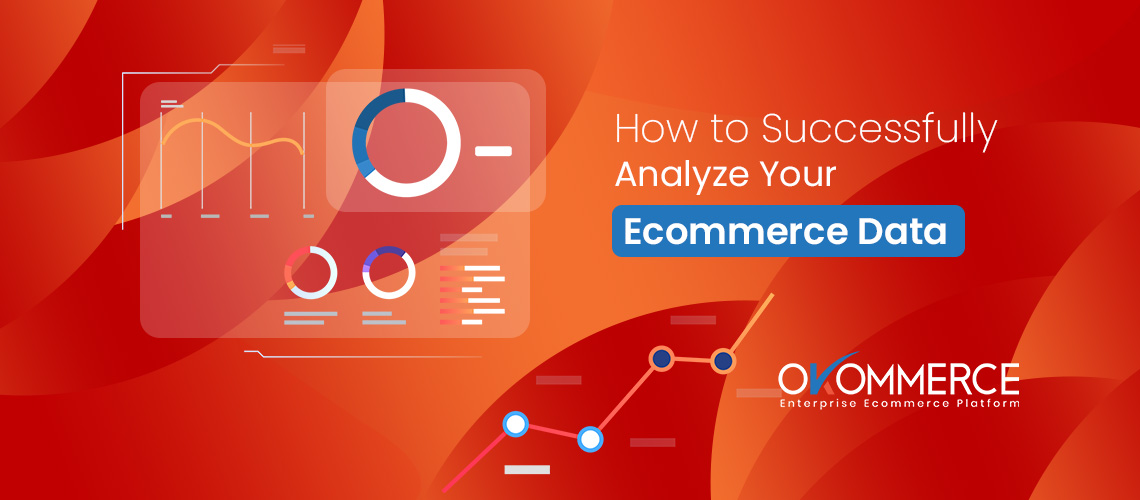
Running an ecommerce website without analyzing its data is like riding a bike without opening your eyes. There are a few parameters that show whether or not your business strategies are working. You won’t understand the progress or downturn of your business in all aspects unless you keep track of these ecommerce metrics. You can excel in sales and outperform your competitors after making the right adjustments according to the data analysis. How to run a data analysis? In this article, I will provide you with proven ways to analyze your e-commerce data. Keep reading to learn more about ecommerce analytics.
Why Does Ecommerce Data Analysis Matter?
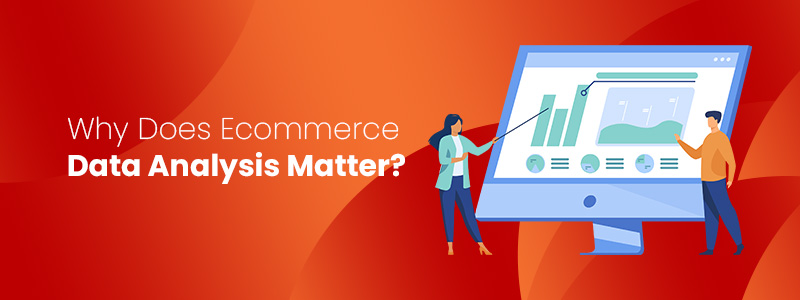
According to a stat, 81% of online shoppers carry out online research before buying a product online. Another stat shows scary data revealing that only 2.86% of website visitors actually confirm a purchase. So, you’re missing out on a large number of sales even after making sincere efforts. How will you know the number of users that visit your website while conducting online research? How will you know your conversion rates? Only ecommerce analytics can provide these insights, including many others. Once you know what is going right or wrong, you can act accordingly. That’s the reason why analyzing ecommerce data is important.
Major Components of Ecommerce Analytics
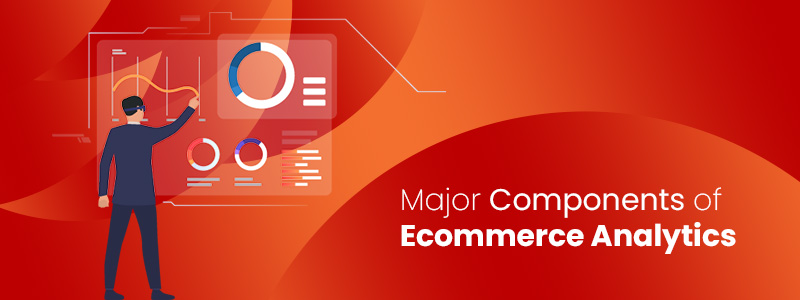
Before learning how to analyze your ecommerce data, it’s necessary to know the major components of ecommerce metrics. Speaking frankly, there are too many metrics associated with the ecommerce industry, you don’t need to emphasize all of them. Take note of the following ecommerce analytics, I can assure you that they’ll work well enough to serve your purpose.
- Reach: This refers to the number of users that get exposed to your content across various digital platforms.
- Demographics: Demographic information comprises the data of visitors’ age, gender, and geographic location.
- Impressions: Impressions share a close connection with reach. Impressions mean the number of times visitors see your post. You may get more than one impression from the same user.
- Click-through Rate (CTR): CTR implies the percentage of total estimated clicks to the number of total impressions.
- Engagement: If your post or content gets likes, comments, and shares that tells of a great success. Compare the total number of your followers, subscribers, and forum members with overall engagement outcomes to determine the engagement metric.
- Bounce Rate: Bounce rate is very crucial for ecommerce websites. It shows the percentage of visitors who bounce off your website right after entering. The first step to succeeding in online business is to reduce the bounce rate as much as possible.
- Acquisition: Acquisition reports contain information about the sources of visitors. You’ll know which platform renders you with the most number of visitors and can compare the cost and outcomes using this metric, and change the strategy if required.
- Average Session Duration: Session duration is the period of time a visitor spends on your website. Average session duration is analytic that shows the average time all users spend on your website.
- Sales Conversions: This metric is very critical for ecommerce business. Sales conversion rate is the percentage of total sales generated on the basis of the number of total visitors. If only a visitor makes a purchase online, it increases conversions. High conversion rates refer to more sales.
- Cart Abandonment Rate: A good number of visitors add products to the cart but leave before confirming an order. Cart abandonment rate shows information about them.
- Customer Lifetime Value (CLV): It shows the data about repeat customers. CLV predicts the amount of money a retained customer is likely to spend on your ecommerce business throughout their lifetime. High customer retention contributes to increasing high customer lifetime value.
- Net Promoter Score (NPS): By analyzing this metric, you’ll understand how willingly your customers suggest your website or products or services to fellow customers. It will allow you to have a clear insight into the business from users’ ends.
- SEO Score: SEO score refers to the overall performance of your website in terms of organic traffic, site speed, user experience, mobile responsiveness, meta content, H-tags, keywords, and other ranking factors. Good SEO health will help your website rank higher on Google organically.
5 Steps to Perform a Successful E-commerce Data Analysis
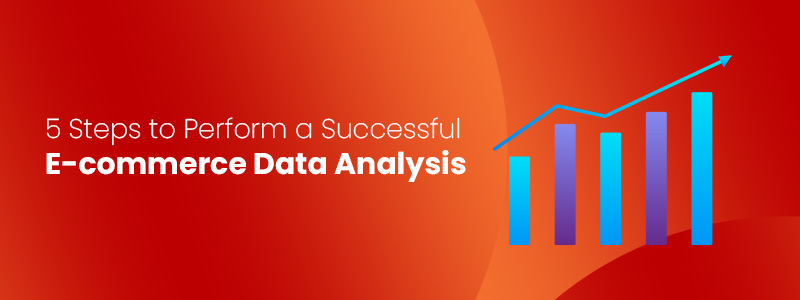
Now that you have a basic understanding of the technical terms used in ecommerce data analysis, it’s time to learn more about analyzing your ecommerce data efficiently. Read the following sections, I’ve discussed all the necessary steps to help you carry out a perfect analysis.
1. Know Your Sources

Give emphasis on customer behavior data, advertising information, support forms, online chats, and social media metrics. You can use Google Analytics to access these data. Some ecommerce platforms like WooCommerce, Magneto, and OKOMMERCE come with integrated analytics tools to help users analyze data more efficiently. After determining the sources, organize all your data sourced from different channels together.
2. Collect Your Data
Once you specify the source channels through which information is displayed, the next step is to collect the data. The audience is separated into many groups in terms of age, gender, education, race, income, relationship status, location, etc. Collect these details to have comprehensive knowledge about your audience. You can use browser cookies, API tools, web databases, and ad campaign results to collect substantial data.
3. Process Data
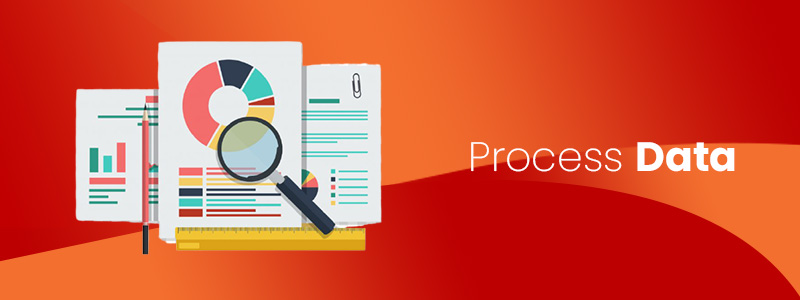
With the advancements of digital marketing technologies, it becomes very easy to process cluttered data into well-organized data in the forms of graphs, pie charts, rows, columns, and the like. You have to undergo a tedious manual task if you don’t have an automated tool capable of processing unstructured data.
4. Omit Unnecessary Information
You may end up with duplicate data, wrongly processed information, and other human errors. Moreover, some data may get lost, some may express partial results, and some may get deleted too. Audit the data thoroughly before moving on to the analysis stage. Pay painstaking attention to all the numbers, stats, graphs, charts, rows, and columns to find errors. Try your level best to compensate for the errors and prepare credible data for the next stage.
5. Analyze Your Ecommerce Data
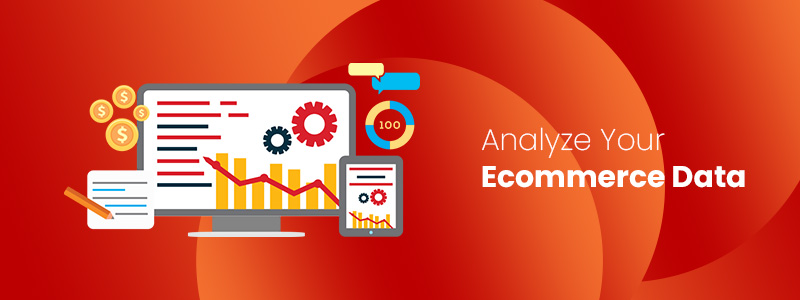
This is the step where all your efforts will receive their due rewards. Examine the customer analytics to find out which of your work strategies is bringing expected results and which ones are failing. Try to understand the direction of these metrics to have greater insights into customer behavior, user intent, and other abstract concepts that affect online business.
Inspect the amount of revenue and cost data to find out gaps between expectations and reality. You can also make use of artificial intelligence (AI) or professional manpower to help analyze your data efficiently. Make a well-informed business decision for better outcomes. Don’t surrender to your gut feeling while making an important decision. Filter all these data to find your way out if there’s an issue.
Different Types of Ecommerce Data Analysis
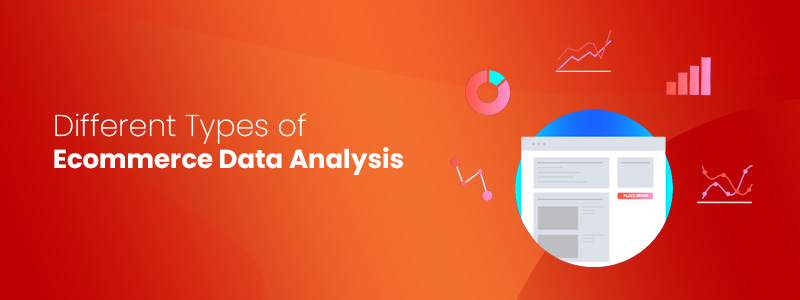
After processing the data in a streamlined format, run your ecommerce data analysis in the following ways. You can adopt any of these techniques or all of them as per your needs.
Descriptive Analysis

This is the key process of data analysis. It gives answers to these questions, “What went wrong or right? How did it happen? How many times? When? Where?” It describes all the issues thoroughly and helps users find a solution. It comes with KPI (Key Performance Indicator) dashboards, revenue reports, and sales overview.
Diagnostic Analysis
This process digs deeper into the problem. It investigates the Whys of a situation and diagnoses the actual problems. It helps users understand hidden patterns and trends in the ecommerce business. It provides precise user behavior data and shows why marketing campaigns are successful or not and sales conversations are high or low. It facilitates the way to run effective marketing activities.
Predictive Analysis
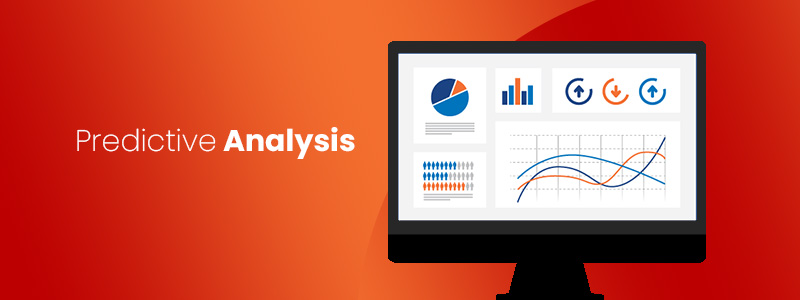
It forecasts the future and helps users be ready to face contingencies. It takes account of the behavior trends and sales history of customers and tells what’s likely to occur in the coming days. It predicts future sales by determining which lead has buyer intent. You can be aware of possible risks after conducting a predictive analysis.
Prescriptive Analysis
This is the final step of data analysis. It tells you what to do to overcome a situation. The deadly combo of AI and big data join forces to help users determine the necessary actions to reduce risks, improve customer experience, optimize inventory, and increase SEO scores, etc. You will need sophisticated applications, software, and technologies to run this kind of analysis.
A Brief Introduction to Google Analytics

To run effective data analysis for ecommerce, there’s no better tool than Google Analytics. I suggest this tool to everyone who seeks my advice. It’s incredibly user-friendly and provides authentic data for free. It allows ecommerce business owners to use all the sales data through their GA account. It’s the best free tool to funnel ecommerce analytics.
Once you integrate this tool with your site, you’ll get access to information regarding sessions, sales rates, and other related data for different marketing channels. Setting up Google Analytics for ecommerce might get tricky for the first time. I recommend you seek help from your programmer friend.
You can also use tools like Google Console, Hotjar, Conversific, Facebook Analytics, Session Recorder, etc. to access intelligible data and take timely action if necessary. Among these, Hotjar offers heatmaps and visual interpretation of user data. This helps a lot to determine what’s in your webpage is getting more clicks and what is not.
A/B Testing for Better Results
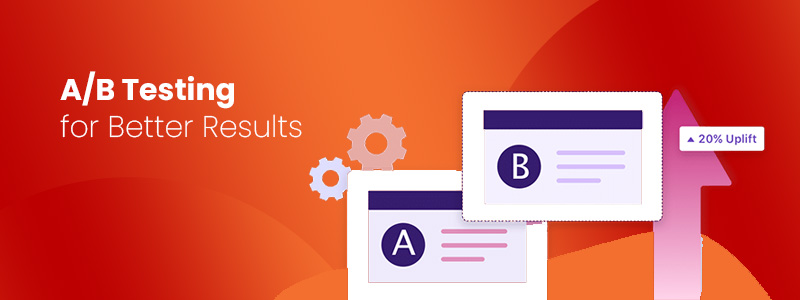
A/B testing aka split testing is an excellent practice to help users succeed in the ecommerce business. It refers to the process of creating two versions of a webpage, landing page, email, marketing content, ads, and then comparing the two variations against each other. You can expose one version to a group of people and the other version to another group. It will provide you with practical data consisting of different metrics of both versions. Now, it’s your turn to analyze what are the differences, which version is driving more results, and what changes can be made to improve their performance.
Data represent facts. They interpret different situations in the most accurate manner. But, some facts might be misleading if you don’t consider other variables related to the metrics in question. Therefore, it’s essential to look into data from a broader perspective. Avoid acting instinctively based on information that doesn’t fit in the context. That’s why analyzing your eCommerce data is crucial to your success. Hope you will consider these data from a 360° angle and take the right steps to succeed as an ecommerce owner.
OKOMMERCE is an enterprise ecommerce platform that works perfectly for ecommerce data analyzing. It has report generation features that works perfectly analyzing all data pertaining to your online business.




